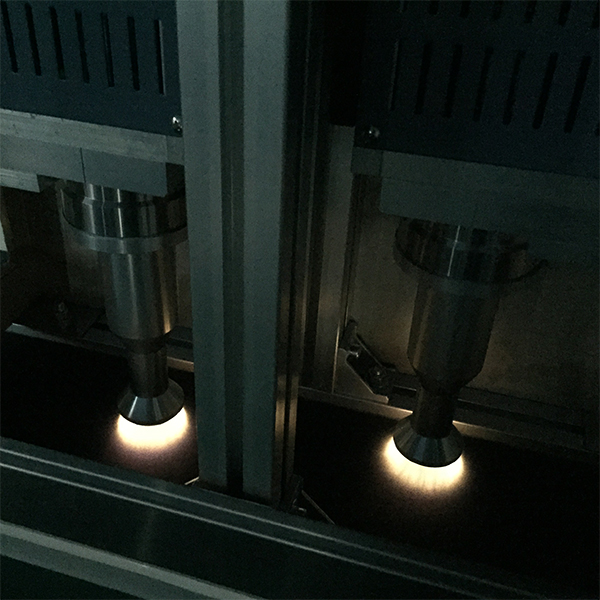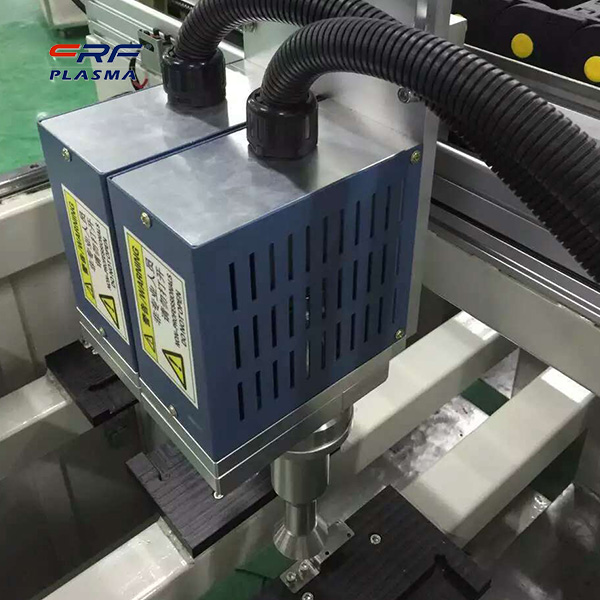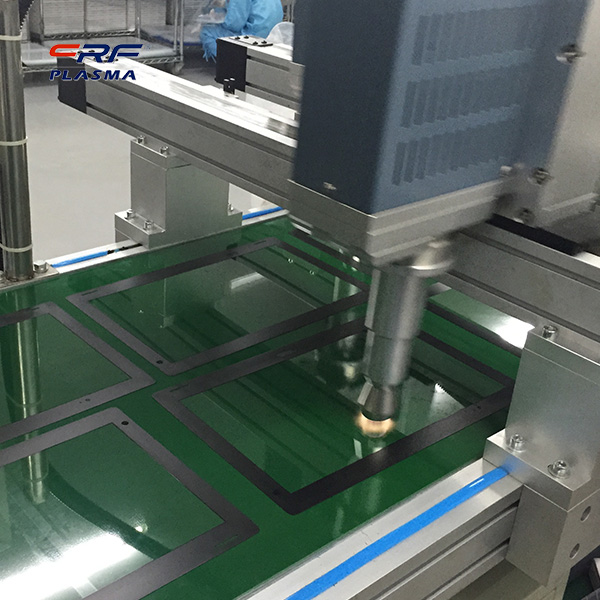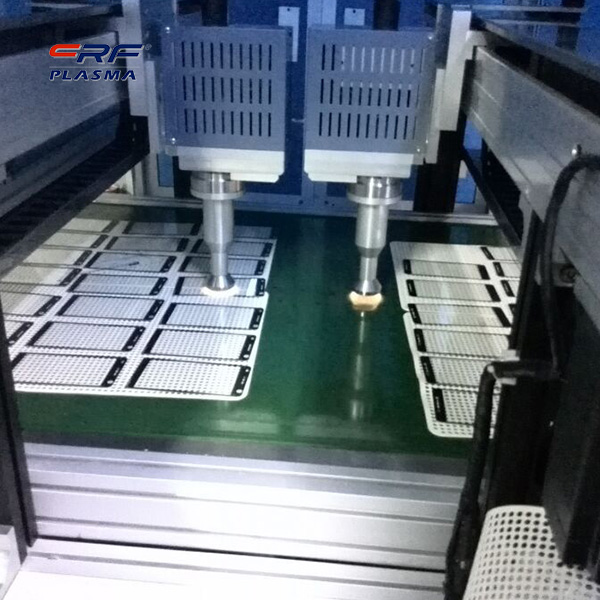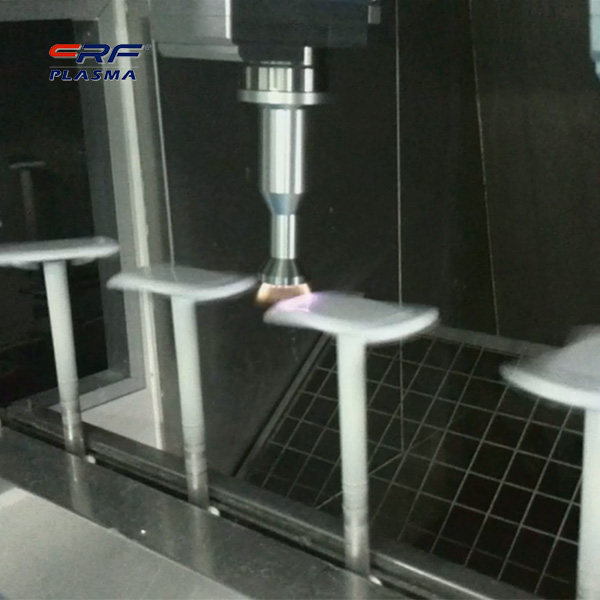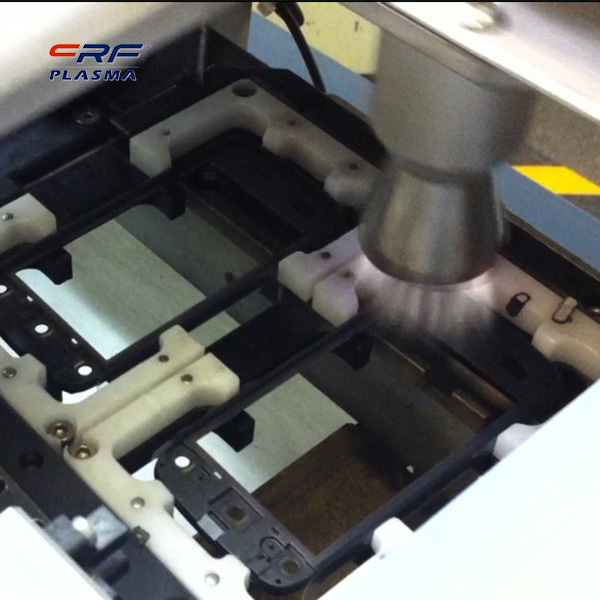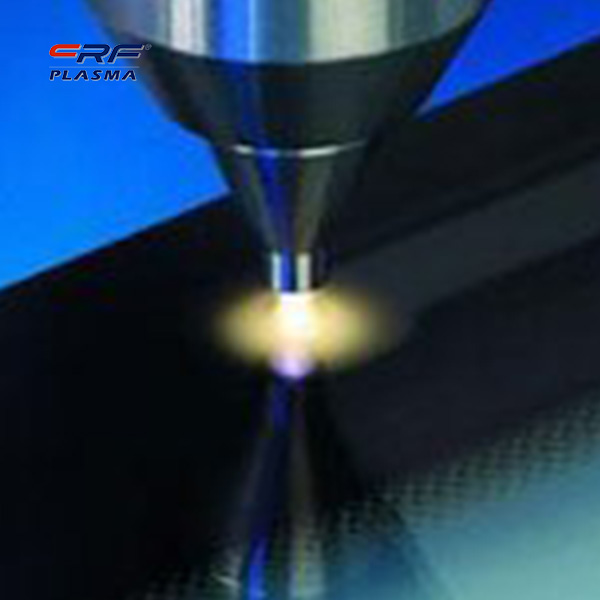
Welcome to Shenzhen Sing Fung Intelligent Manufacturing Co., Ltd.
E-mail:shaobo@sfi-crf.com
Research on plasma surface treatment of ultra-smooth substrate by plasma etching machine
- Categories:Industry News
- Author:Plasma cleaning machine-CRF plasma plasma equipment-plasma surface treatment machine manufacturer-chengfeng intelligent manufacturing
- Origin:
- Time of issue:2021-10-09
- Views:
(Summary description)Research on plasma surface treatment of ultra-smooth substrate by plasma etching machine: Plasma treatment can remove the processed deterioration layer by sputtering, reduce the surface roughness, improve the surface cleanliness and surface energy of the substrate. The optimized parameters prove that the substrate treated by plasma etching is better than the substrate without plasma treatment. The loss after coating was reduced by an average of 34.2ppm and showed good consistency. In recent years, with the rapid development of semiconductor technology and optical technology, the application of ultra-smooth surfaces has become more and more extensive, and the requirements for the quality of ultra-smooth surfaces have become higher and higher. In the manufacture of laser gyro, the processing quality of the mirror substrate directly affects the optical performance of the coated mirror and the quality of the photoresist between the optical elements, which in turn affects the accuracy, stability and reliability of the gyro. At present, the super-smooth surface is mainly obtained by polishing. Due to the processing characteristics and environmental factors, the polished super-smooth surface adsorbs a large number of particulate organic matter and other pollutants, and the optical surface obtained by the asphalt polishing process is a "pseudo surface", namely There is a processing deterioration layer, which is composed of a rheological layer damage layer and a hydrolyzate layer. The "pseudo surface" has a large number of internal defects and is highly active. It is easy to become a nucleation center during the coating process, which seriously affects the physical structure of the film and thus has a great impact on the optical performance of the mirror. In order to describe the real surface, the surface is divided into: outer surface layer (pollutant, adsorption layer) and inner surface layer (processed deterioration layer). Traditional surface treatment mainly uses brushing and ultrasonic cleaning. Due to the technology itself, it can only remove the dirt adsorbed on the surface, that is, the outer surface layer, and has no effect on the inner surface layer (polished and deteriorated layer). Plasma etching Plasma surface treatment is a technology developed in the past ten years, and it is widely used due to its full dry method and good pollution-free treatment effect. The ion energy in the plasma reaches hundreds of electron volts, which can not only remove the fine impurities adsorbed on the surface, but also sputter and polish the surface of the substrate. Plasma treatment can reduce the surface roughness of the substrate and remove the processed deterioration layer. The radio frequency power of plasma etching directly affects the density of gas ionization and the energy of ions, which in turn affects the effect of plasma on the surface of the substrate. Plasma surface treatment uses high-energy ions to act on the surface of the substrate to sputter off the loose atomic layer (that is, the polished metamorphic layer) by collision. The treatment is carried out in a vacuum environment, and the surface of the substrate is not easily contaminated, thereby obtaining freshness. The dense real surface improves the quality of the ultra-smooth optical surface, which is conducive to the growth of epitaxial films. Before plasma etching plasma treatment, the droplets are not spread out on the surface of the substrate, and the shape is irregular; after plasma treatment, the droplets spread out on the surface, the average spread area is 4.6 times that before the treatment, and the shape is regular Round. This shows that the surface energy of the substrate is improved and becomes uniform after plasma treatment. The surface of the asphalt-polished substrate must have a processing deterioration layer. Plasma etching plasma treatment can remove the processing deterioration layer by sputtering, reduce surface defects, greatly improve the cleanliness and surface energy of the substrate surface, and obtain a fresh, dense, uniform, and flat Super smooth surface.
Research on plasma surface treatment of ultra-smooth substrate by plasma etching machine
(Summary description)Research on plasma surface treatment of ultra-smooth substrate by plasma etching machine:
Plasma treatment can remove the processed deterioration layer by sputtering, reduce the surface roughness, improve the surface cleanliness and surface energy of the substrate. The optimized parameters prove that the substrate treated by plasma etching is better than the substrate without plasma treatment. The loss after coating was reduced by an average of 34.2ppm and showed good consistency.
In recent years, with the rapid development of semiconductor technology and optical technology, the application of ultra-smooth surfaces has become more and more extensive, and the requirements for the quality of ultra-smooth surfaces have become higher and higher. In the manufacture of laser gyro, the processing quality of the mirror substrate directly affects the optical performance of the coated mirror and the quality of the photoresist between the optical elements, which in turn affects the accuracy, stability and reliability of the gyro.
At present, the super-smooth surface is mainly obtained by polishing. Due to the processing characteristics and environmental factors, the polished super-smooth surface adsorbs a large number of particulate organic matter and other pollutants, and the optical surface obtained by the asphalt polishing process is a "pseudo surface", namely There is a processing deterioration layer, which is composed of a rheological layer damage layer and a hydrolyzate layer.
The "pseudo surface" has a large number of internal defects and is highly active. It is easy to become a nucleation center during the coating process, which seriously affects the physical structure of the film and thus has a great impact on the optical performance of the mirror.
In order to describe the real surface, the surface is divided into: outer surface layer (pollutant, adsorption layer) and inner surface layer (processed deterioration layer). Traditional surface treatment mainly uses brushing and ultrasonic cleaning. Due to the technology itself, it can only remove the dirt adsorbed on the surface, that is, the outer surface layer, and has no effect on the inner surface layer (polished and deteriorated layer).
Plasma etching Plasma surface treatment is a technology developed in the past ten years, and it is widely used due to its full dry method and good pollution-free treatment effect.
The ion energy in the plasma reaches hundreds of electron volts, which can not only remove the fine impurities adsorbed on the surface, but also sputter and polish the surface of the substrate. Plasma treatment can reduce the surface roughness of the substrate and remove the processed deterioration layer.
The radio frequency power of plasma etching directly affects the density of gas ionization and the energy of ions, which in turn affects the effect of plasma on the surface of the substrate.
Plasma surface treatment uses high-energy ions to act on the surface of the substrate to sputter off the loose atomic layer (that is, the polished metamorphic layer) by collision. The treatment is carried out in a vacuum environment, and the surface of the substrate is not easily contaminated, thereby obtaining freshness. The dense real surface improves the quality of the ultra-smooth optical surface, which is conducive to the growth of epitaxial films.
Before plasma etching plasma treatment, the droplets are not spread out on the surface of the substrate, and the shape is irregular; after plasma treatment, the droplets spread out on the surface, the average spread area is 4.6 times that before the treatment, and the shape is regular Round. This shows that the surface energy of the substrate is improved and becomes uniform after plasma treatment.
The surface of the asphalt-polished substrate must have a processing deterioration layer. Plasma etching plasma treatment can remove the processing deterioration layer by sputtering, reduce surface defects, greatly improve the cleanliness and surface energy of the substrate surface, and obtain a fresh, dense, uniform, and flat Super smooth surface.
- Categories:Industry News
- Author:Plasma cleaning machine-CRF plasma plasma equipment-plasma surface treatment machine manufacturer-chengfeng intelligent manufacturing
- Origin:
- Time of issue:2021-10-09 18:00
- Views:
Research on plasma surface treatment of ultra-smooth substrate by plasma etching machine:
Plasma treatment can remove the processed deterioration layer by sputtering, reduce the surface roughness, improve the surface cleanliness and surface energy of the substrate. The optimized parameters prove that the substrate treated by plasma etching is better than the substrate without plasma treatment. The loss after coating was reduced by an average of 34.2ppm and showed good consistency.
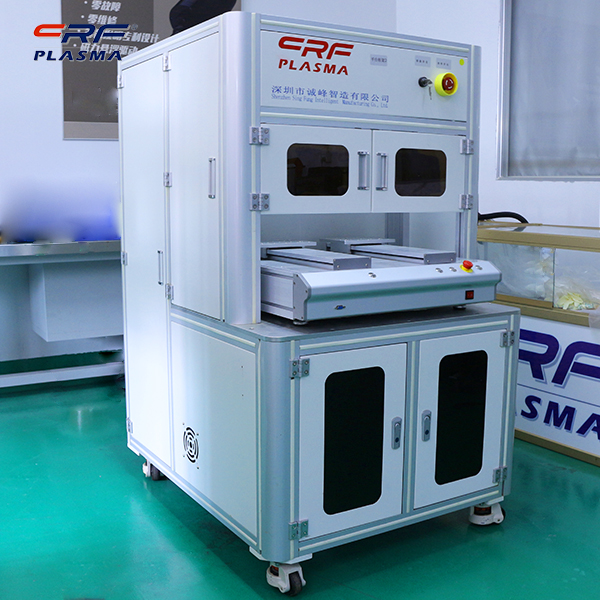 In recent years, with the rapid development of semiconductor technology and optical technology, the application of ultra-smooth surfaces has become more and more extensive, and the requirements for the quality of ultra-smooth surfaces have become higher and higher. In the manufacture of laser gyro, the processing quality of the mirror substrate directly affects the optical performance of the coated mirror and the quality of the photoresist between the optical elements, which in turn affects the accuracy, stability and reliability of the gyro.
In recent years, with the rapid development of semiconductor technology and optical technology, the application of ultra-smooth surfaces has become more and more extensive, and the requirements for the quality of ultra-smooth surfaces have become higher and higher. In the manufacture of laser gyro, the processing quality of the mirror substrate directly affects the optical performance of the coated mirror and the quality of the photoresist between the optical elements, which in turn affects the accuracy, stability and reliability of the gyro.
At present, the super-smooth surface is mainly obtained by polishing. Due to the processing characteristics and environmental factors, the polished super-smooth surface adsorbs a large number of particulate organic matter and other pollutants, and the optical surface obtained by the asphalt polishing process is a "pseudo surface", namely There is a processing deterioration layer, which is composed of a rheological layer damage layer and a hydrolyzate layer.
The "pseudo surface" has a large number of internal defects and is highly active. It is easy to become a nucleation center during the coating process, which seriously affects the physical structure of the film and thus has a great impact on the optical performance of the mirror.
In order to describe the real surface, the surface is divided into: outer surface layer (pollutant, adsorption layer) and inner surface layer (processed deterioration layer). Traditional surface treatment mainly uses brushing and ultrasonic cleaning. Due to the technology itself, it can only remove the dirt adsorbed on the surface, that is, the outer surface layer, and has no effect on the inner surface layer (polished and deteriorated layer).
Plasma etching Plasma surface treatment is a technology developed in the past ten years, and it is widely used due to its full dry method and good pollution-free treatment effect.
The ion energy in the plasma reaches hundreds of electron volts, which can not only remove the fine impurities adsorbed on the surface, but also sputter and polish the surface of the substrate. Plasma treatment can reduce the surface roughness of the substrate and remove the processed deterioration layer.
The radio frequency power of plasma etching directly affects the density of gas ionization and the energy of ions, which in turn affects the effect of plasma on the surface of the substrate.
Plasma surface treatment uses high-energy ions to act on the surface of the substrate to sputter off the loose atomic layer (that is, the polished metamorphic layer) by collision. The treatment is carried out in a vacuum environment, and the surface of the substrate is not easily contaminated, thereby obtaining freshness. The dense real surface improves the quality of the ultra-smooth optical surface, which is conducive to the growth of epitaxial films.
Before plasma etching plasma treatment, the droplets are not spread out on the surface of the substrate, and the shape is irregular; after plasma treatment, the droplets spread out on the surface, the average spread area is 4.6 times that before the treatment, and the shape is regular Round. This shows that the surface energy of the substrate is improved and becomes uniform after plasma treatment.
The surface of the asphalt-polished substrate must have a processing deterioration layer. Plasma etching plasma treatment can remove the processing deterioration layer by sputtering, reduce surface defects, greatly improve the cleanliness and surface energy of the substrate surface, and obtain a fresh, dense, uniform, and flat Super smooth surface.
Scan the QR code to read on your phone

TEL:0755-3367 3020 / 0755-3367 3019

E-mail:sales-sfi@sfi-crf.com

ADD:Mabao Industrial Zone, Huangpu, Baoan District, Shenzhen




